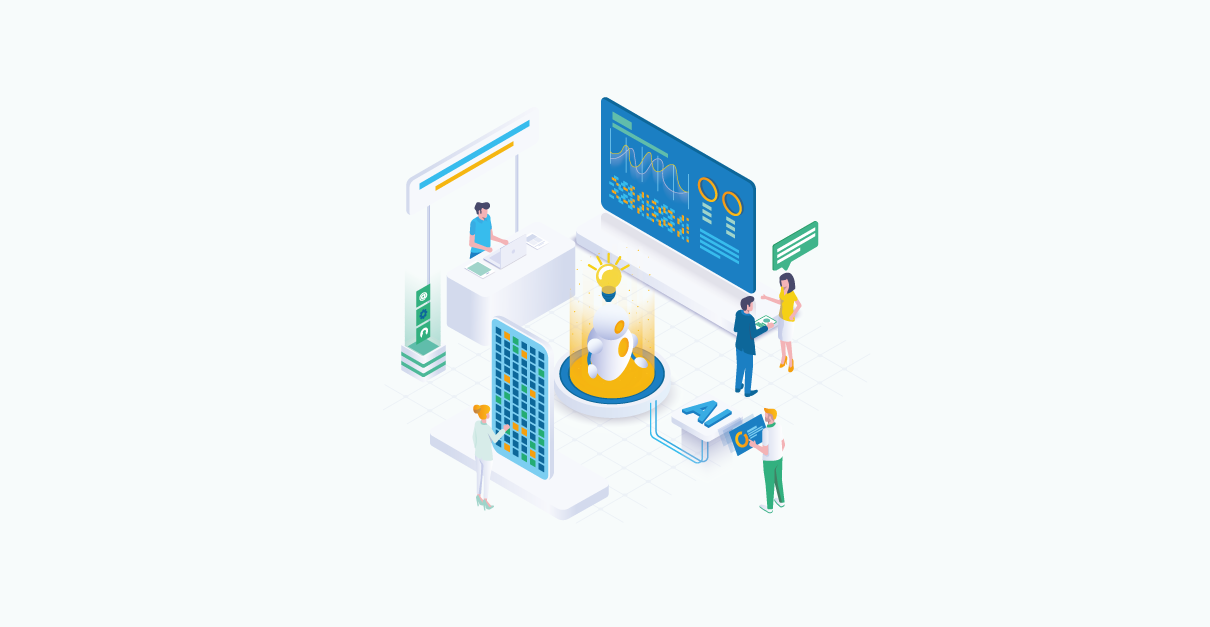Artificial Intelligence in Practice: From Efficiency to Customer Experience in the Consumer Electronics Sector
Artificial intelligence (AI) is no longer just a technological promise; it has become a concrete reality that redefines business strategies and directly impacts people’s lives. In recent years, we have witnessed an unprecedented acceleration in AI adoption, placing it at the center of discussions on innovation, competitiveness, and digital transformation. It is a technology that not only supports processes but also guides decisions, creates value, and opens new possibilities across virtually every sector of the economy.
In the first two posts of this series, we laid the foundation for this transformation. First, we explored the fundamentals of Artificial Intelligence, highlighting how concepts such as machine learning, predictive intelligence, and neural networks provide the basis for solutions already in practice. Then, we analyzed how different industries are adopting AI, revealing gains in efficiency, personalization, and innovation, as well as the structural and cultural challenges that still need to be overcome.
Now we turn to a sector where the impacts of AI are apparent: the consumer electronics and home appliances market. More than just manufacturing products, this industry is directly connected to the way we work, communicate, and live. Smartphones, televisions, computers, and connected devices are not merely consumer goods; they are extensions of modern life. And it is precisely in this highly competitive and dynamic environment that Artificial Intelligence emerges as a decisive factor, from productive efficiency to creating personalized consumer experiences.
Why is Artificia Intelligence decisive in this sector?
Consumer electronics businesses face a highly competitive environment. The pressure for constant innovation, short product launch cycles, the complexity of global supply chains, and increasingly connected and demanding consumers create a challenging context.
AI offers a strategic path to address these issues: it enables process automation, improves predictability, reduces costs, increases quality, and drives the development of products that adapt to consumer needs.
Main AI applications in the sector
- Supply chain optimization
Electronics manufacturing depends on thousands of parts and suppliers located worldwide. Logistic disruptions, such as those recently experienced during global crises, can have massive impacts. Artificial Intelligence helps mitigate these risks: demand forecasting algorithms and risk analysis map possible scenarios, identify bottlenecks, and suggest more efficient solutions. The result is a more agile, resilient supply chain with lower inventory costs. - Smart manufacturing
On the production line, AI is driving the leap toward Industry 4.0. Computer vision systems inspect parts in real time, detecting microscopic flaws that would otherwise go unnoticed. In addition, predictive maintenance models analyze sensor data and indicate when a machine is about to fail, preventing unexpected downtime and costly emergency repairs. - Smarter and more connected products
AI may also be embedded in the products themselves. Today, refrigerators can monitor stored food and suggest recipes, televisions can adjust brightness and sound based on the environment, and smartphones can learn usage patterns to optimize battery life. This level of embedded intelligence increases convenience, improves usability, and creates new value for consumers. - Customer experience and after-sales
In retail and customer relations, AI enables more personalized strategies. Recommendation tools suggest the right product at the right time, marketing campaigns become more targeted, and chatbots resolve queries quickly, reducing wait times. In after-sales, predictive analytics can anticipate the need for appliance maintenance even before the customer notices an issue, strengthening trust in the brand. - Innovation in design and development
Product development also benefits from AI. Generative AI tools create virtual prototypes in seconds, test thousands of design combinations, and even simulate the performance of different materials under real-world conditions, which reduces development time and costs, accelerates product launches, and boosts competitiveness.
Opportunities and barriers
The opportunities enabled by AI are clear: operational efficiency, accelerated innovation, and an improved customer experience. However, the sector also faces barriers. Data integration across different business areas, the shortage of skilled data science professionals, and the need to invest in technological infrastructure are recurring challenges.
Another key issue is sustainability. While AI helps reduce waste and improve energy efficiency, it also requires substantial computational power, raising debates about energy consumption and environmental responsibility.
The future of AI in consumer electronics
Looking ahead, AI will become even more integrated. The expansion of the Internet of Things (IoT) will connect millions of smart devices, which will interact with each other and continuously learn from the data they generate. Moreover, generative AI promises to accelerate product personalization, allowing consumers to own electronics increasingly tailored to their lifestyles, i.e., AI will not be just a supporting technology; it will be the central axis upon which the consumer electronics sector builds its growth, reshaping products, processes, and experiences in radically new ways.
Conclusion
Artificial intelligence is transforming the consumer electronics and home appliances industry in every dimension, from production to after-sales, from new product design to the way consumers interact with them. Businesses that embrace this revolution will gain significant competitive advantages, but they must also overcome cultural, structural, and sustainability challenges.
In the next post of this series, we will explore how AI is transforming another key sector of the economy: the real estate market, sharing practical use cases and the prominent trends shaping this evolution.
Lastest post
- Artificial Intelligence in Practice: the future of AI, sustainability and ESG
- Inteligencia Artificial en la Práctica: del poder de los lenguajes al desarrollo de software personalizado
- Artificial Intelligence in Practice: from the Power of Languages to Custom Software Development
- Artificial Intelligence in Practice: how AI is transforming the real estate sector
- Artificial Intelligence in Practice: From Efficiency to Customer Experience in the Consumer Electronics Sector
- Artificial Intelligence in Practice: How Companies Are Transforming Their Operations and Strategies
